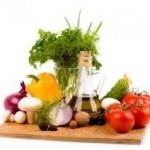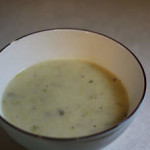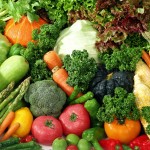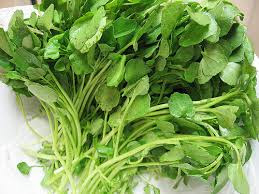Optimal Magnesium Levels for Positive Aging
By Nina Beucler Rebstock
Certified Health and Nutrition Counselor
If we think of aging as a journey and not a fight, a privilege and not a sentence, the last decades of our lives are liberating! By giving our bodies what they need to function properly, we supply energy, nutrients, hydration and the foundation to have strong, interesting longevity experiences! Magnesium is one of the essential ingredients in this equation. But not all magnesium is created equal.
What is magnesium and why do we need it?
Magnesium is a macro-mineral, and one of the six essential minerals that must be supplied in the diet. It is needed for more than 300 chemical reactions in the body. It helps to maintain normal nerve and muscle function, supports a healthy immune system, keeps the heartbeat steady, and helps bones remain strong. It also helps regulate blood glucose levels, aids in the production of energy and protein, and is needed to adjust the levels of cholesterol produced and released into the blood stream.
Hard working magnesium drives our fuel source, protects our DNA and regulates our electrolyte balance. This powerful mineral also helps you relax and can relieve constipation. We need magnesium for brain health, adrenal health, heart health, and overall wellbeing.
Some signs that you are low in magnesium are:
- Muscle cramps
- Headaches
- Heart rhythm abnormalities
- Loss of appetite
- Fatigue, numbness or tingling
- Nausea
- Painful muscle spasms or cramps
- Fibromyalgia
- Facial tics
- Eye twitches, or involuntary eye movements
- Calcium deficiency
- Anxiety
- Times of hyperactivity
- Difficulty getting to sleep, or staying asleep
Neuromuscular symptoms such as these are among the classic signs of a potential magnesium deficiency
Magnesium researcher Mildred Seelig has called magnesium “the silent guardian of our hearts and arteries” and “necessary for life.” And Dr. Carolyn Dean calls it “the missing link to total health.”
How is magnesium beneficial?
Magnesium is a natural calcium-channel blocker – many functional medicine practitioners have used magnesium supplements to help lower and maintain healthy blood pressure.
While we often hear about the importance of calcium for bones, magnesium is the other key mineral for healthy bones. Because so many people take calcium without magnesium, there may actually be a greater need for magnesium in people who are treating osteopenia or osteoporosis. Many people may be in danger of taking too much calcium, which can excite the heart and cause A-fib. In order to balance calcium and magnesium a good ratio is one part calcium to two parts magnesium.
Magnesium is probably the most important nutrient for heart health. It helps keep coronary arteries from having spasms, which is what causes the intense chest pain known as angina. Magnesium also helps protect blood vessels, which is where most of what we call heart disease actually happens. It is also a natural blood thinner, much like aspirin, so many doctors and researchers believe that it may help prevent heart attacks and strokes.
Perhaps the area where magnesium could have the biggest impact is in the prevention of diabetes. Scientists have proven that magnesium levels are low in people with diabetes; people with higher magnesium levels do not develop diabetes; and that supplementing with magnesium appears to help reverse pre-diabetes.
The current daily value (DV) for magnesium is 400mg but some people can benefit from higher levels provided it is not magnesium stearate, which can cause gut distress.
Although it is important to eat foods rich in magnesium it is recommended to supplement as well.
The forms of magnesium that are well absorbed are:
- Magnesium Chloride
- Magnesium L-Threonate
- Magnesium Glycinate
- Ancient Minerals Magnesium Oil or lotion. (It is believed that magnesium is well absorbed when applied topically.)
- Magnesium stearate is recommended for constipation. (It can cause diarrhea so consult a physician or health counselor before using.)
Most people now know that the soil our food is grown in is mineral deficient. This is the key reason why we need to eat magnesium rich foods and supplement daily.
Foods high in magnesium include:
- Dark leafy greens
- Nuts and seeds, (especially pumpkin seeds and roasted cashews)
- Fish
- Beans such as black and navy
- Lentils
- Seafood
- Avocados
- Yogurt
- Bananas and dried fruit (such as figs, apricots and prunes)
- Dark chocolate
- Collard greens
- Garlic
- Kelp
- Edemame
- Whole grains (sprouted or soaked are best)
- Flaxseeds (ground)
Older adults are particularly vulnerable to low magnesium levels. As we age we often eat less magnesium rich foods even though our need for magnesium increases.
In addition, magnesium metabolism may be less efficient as we grow older, as changes in the GI tract and kidneys contribute to absorbing and retaining less magnesium.
* If you are over 55 it is very important to optimize your magnesium levels.
The current daily value (DV) for magnesium is 400mg but some people can benefit from higher levels provided it is not magnesium stearate, which can cause gut distress.
Eating magnesium rich foods daily is necessary. It is also recommended to supplement with good quality magnesium.
The forms of magnesium that are well absorbed are:
- Magnesium L Threonate
- Magnesium Glycinate,
- Ancient Minerals Magnesium Oil. (It is believed that magnesium is very well absorbed when applied topically.)
Between 65% and 80% of Americans are deficient in magnesium, so ask your health practitioner to check your magnesium levels. In the mean time eat foods rich in magnesium daily, and consider supplementing with quality magnesium. As you can see there are many delicious choices.
To your health!










